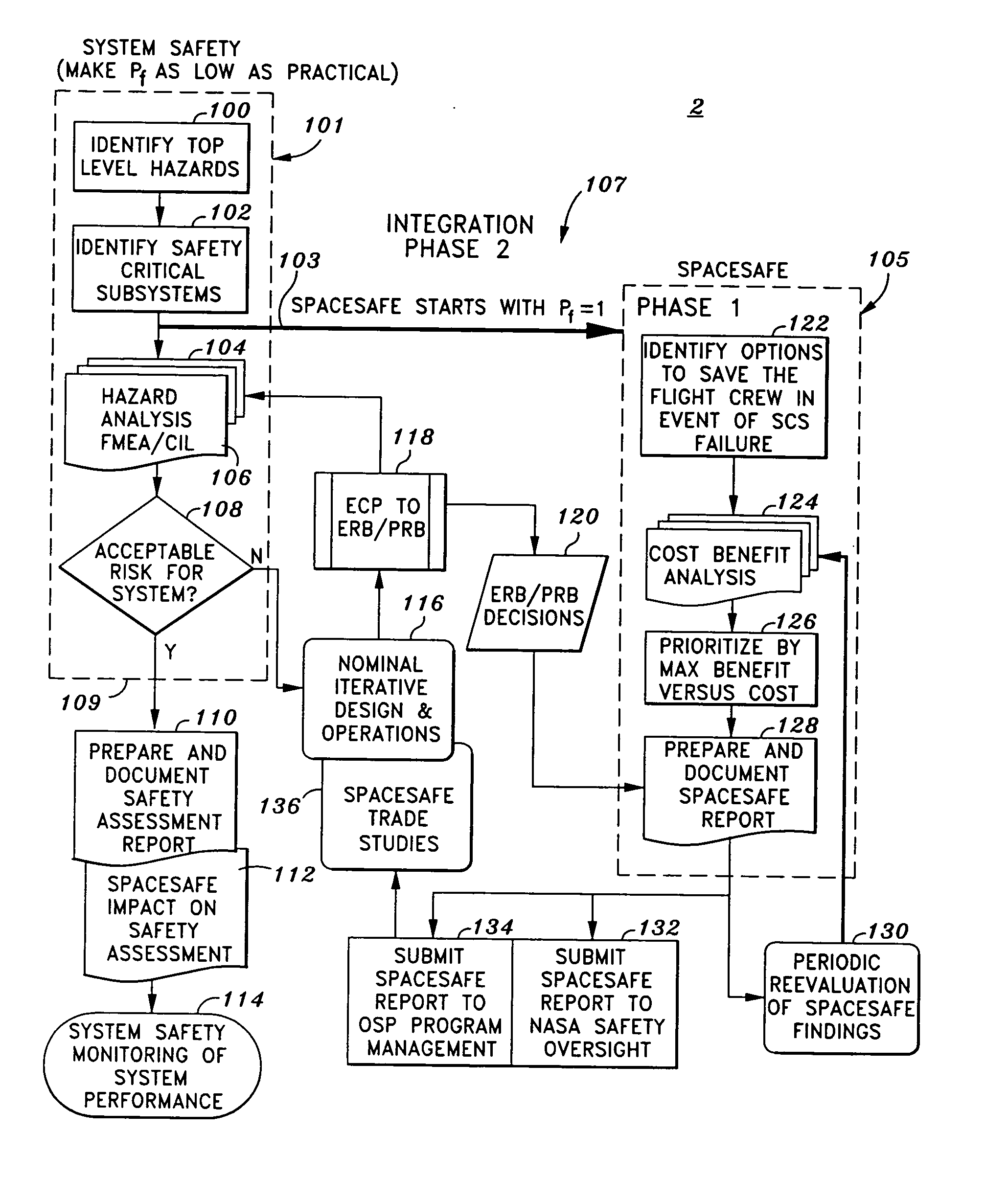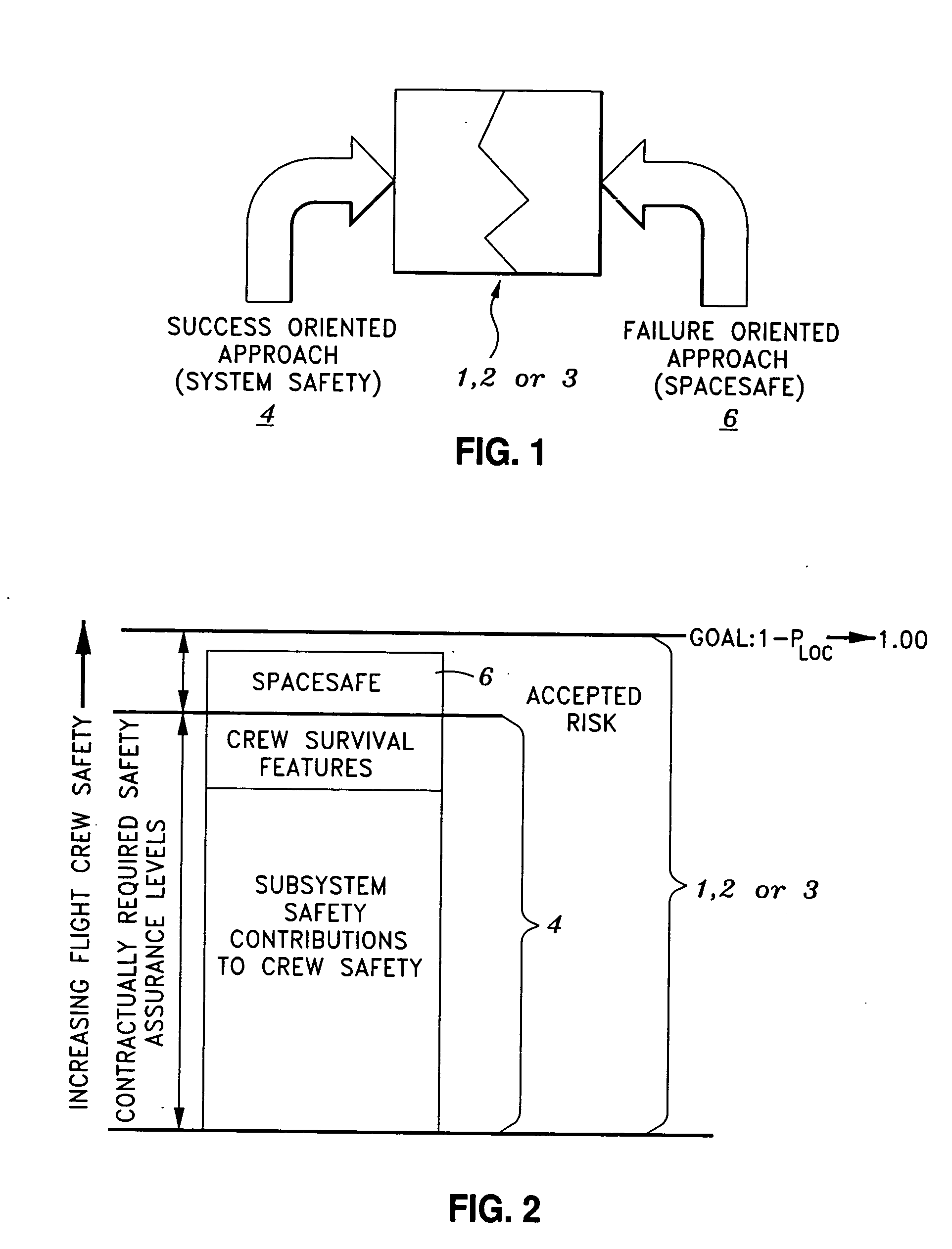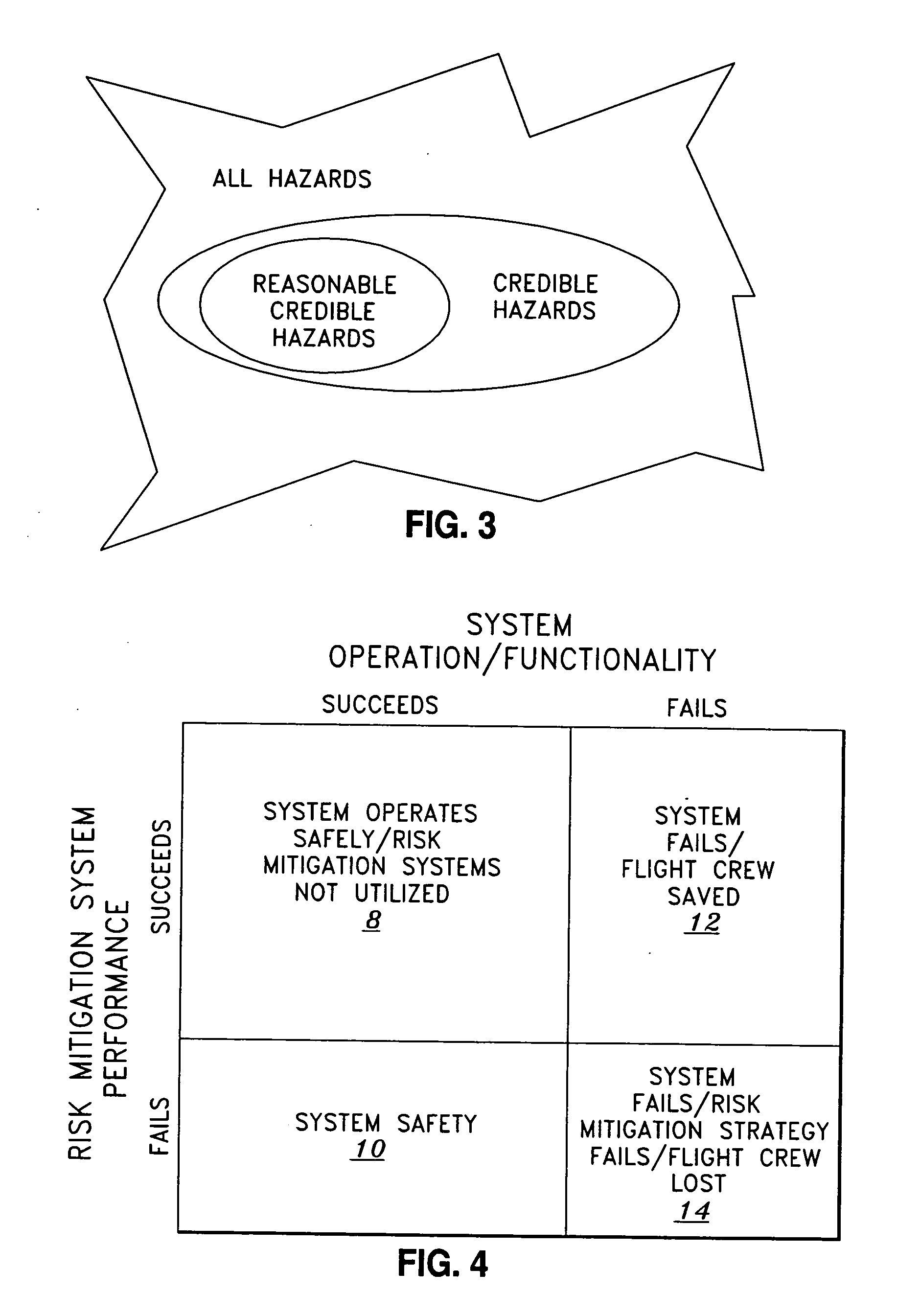Method of evaluation of space systems for safety assurance and residual risk to flightcrew
a technology of safety assurance and flight crew, applied in the field of process used to evaluate manned space systems for safety assurance and residual risk to flight crew, to achieve the effect of improving the survival rate of astronaut operating crew
- Summary
- Abstract
- Description
- Claims
- Application Information
AI Technical Summary
Benefits of technology
Problems solved by technology
Method used
Image
Examples
first embodiment
the Process in Context of the System Safety Program
[0043] A first exemplary embodiment of the SPACESAFE process 1 is flow diagrammed in FIG. 7. At 70, hazards are identified. At 72, Safety Critical Subsystems are identified. At 74, safety critical failure modes and effects are identified. At this breakpoint, System Safety now proceeds with the assessment of risk at the subsystem level and collects the risk calculation to the top level for determination of contractual or Statement of Work (SOW) compliance and verification of the risk assessment by test. Any verification failures or analytical failures are resolved through design or procedural changes until contract or SOW compliance, at a minimum, is achieved. At 78, risk mitigation strategies are evaluated and ranked, with respect to hardware changes 80, software changes 82, procedural changes 84, and other changes 86. At 88, cost, schedule, and risk reduction benefit [% decrease in probability of loss of crew (PLOC)] are evaluated ...
second embodiment
a Process in Context of the System Safety Program
[0044] A second exemplary embodiment of the SPACEBASE process 2 is flow diagrammed in FIG. 8. This process 2 may generally be broken down into several sequences / and or phases, including a “System Safety” phase 101, SPACESAFE “Phase 1”105, and a Integration “Phase 2”107 which integrates the System Safety phase with SPACESAFE “Phase 1”.
[0045] Steps 100 through 109 represent the System Safety sequence 101. It is noted that with the System Safety process, Pf, the probability of failure, is made as low as practical. At 100, top level hazards are identified. At 102, Safety Critical Subsystems are identified. At 104, a hazard analysis is performed via a Failure Mode Effect Analysis (FMEA) and / or a Critical Items List. At 106, it is determined whether the hazard analysis from 104 is an acceptable risk for the system? If no at 108, nominal iterative design and operations are considered at 116. If yes at 109, document safety assessment reports...
third embodiment
a Process in Context of the System Safety Program
[0048] A third exemplary embodiment of the SPACEBASE process 3 is flow diagrammed in FIG. 9. This process 3 may generally be broken down into various sequences / and or phases, including “Phase 1” at 141, “Phase 2” at 161, Phase 3” at 175, and “Phase 4” at 179.
[0049] Before “Phase 1” at 141 is initiated, at 140 the system is baselined and Safety Critical Subsystems (SCS) are identified. Here the SCS list is received from the System Safety function. Moreover, it is assumed the probability of failure, Pf=1 for Safety Critical Subsystems. It is noted that the analysis is performed on each SCS. Once the system is baselined and SCS are identified, Phase 1 is initiated at 142.
[0050] At 142 risk mitigation options are identified. Here, brainstorming occurs, including structured discussion with discipline experts sufficient to address the loss of SCS functionality. Also, discipline experts outside the program design influence are selected (in...
PUM
 Login to View More
Login to View More Abstract
Description
Claims
Application Information
 Login to View More
Login to View More - R&D
- Intellectual Property
- Life Sciences
- Materials
- Tech Scout
- Unparalleled Data Quality
- Higher Quality Content
- 60% Fewer Hallucinations
Browse by: Latest US Patents, China's latest patents, Technical Efficacy Thesaurus, Application Domain, Technology Topic, Popular Technical Reports.
© 2025 PatSnap. All rights reserved.Legal|Privacy policy|Modern Slavery Act Transparency Statement|Sitemap|About US| Contact US: help@patsnap.com



